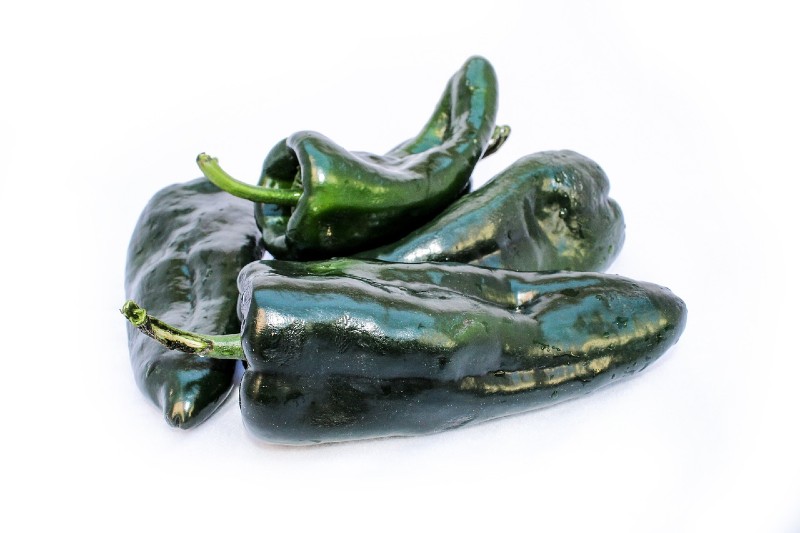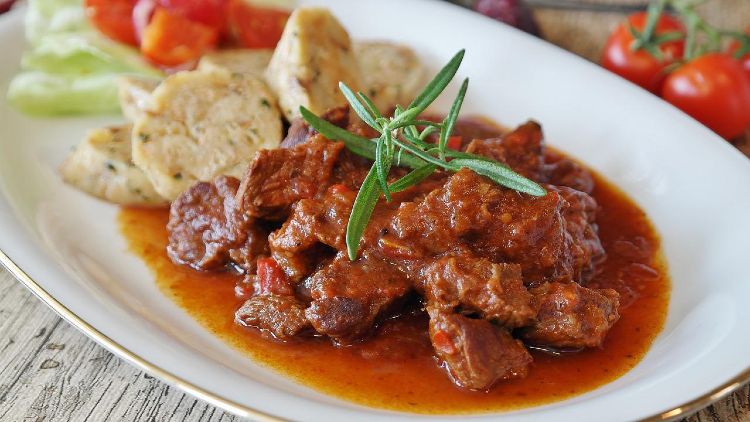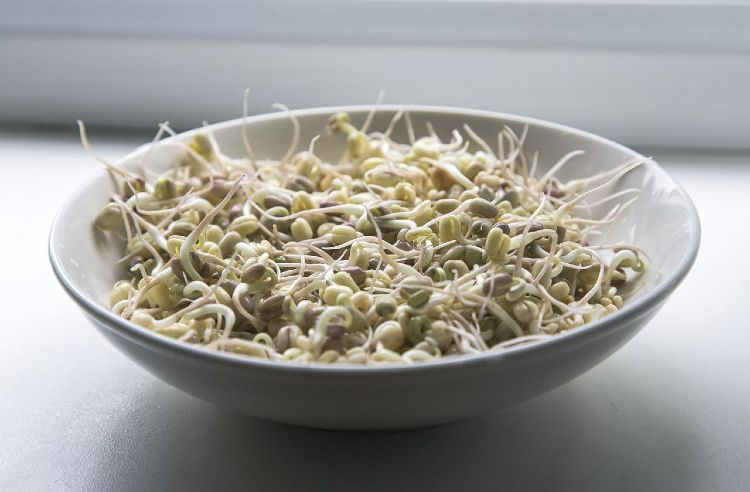Poblano vs Pasilla: Which Pepper Reigns Supreme?
Chili peppers have long held a prominent position in the global culinary arena. Their journey from the Americas to the corners of the world is nothing short of a fascinating tale of exploration, trade, and cultural exchange. Whether it’s the fierce bite of the ghost pepper in Indian curries, the smoky undertones of chipotle in Mexican dishes, or the subtle warmth of paprika in Hungarian goulash, chilies have spiced up our plates and palates in countless ways.
But as with any widespread phenomenon, certain ambiguities arise. Enter the poblano and pasilla peppers, two distinctive chilies that often find themselves mistakenly swapped or incorrectly named in recipes and grocery stores alike. For the uninitiated, it might seem a minor mix-up, but for true chili aficionados, understanding the nuanced difference between these two is paramount.
Poblano vs Pasilla Quick Comparison
| Poblano | Pasilla | |
|---|---|---|
| Origin and History | Native to Puebla, Mexico | Native to central Mexico |
| Physical Characteristics (Fresh) | Deep green color, Wide, somewhat heart-shaped | Deep green to brownish-black, Slender and long |
| Physical Characteristics (Dried) | Ancho, Dark reddish-brown | Dark, wrinkled appearance |
| Flavor Profile | Earthy, Slightly sweet, Mild heat | Berry-like, Slightly bitter, Medium heat |
| Culinary Uses | Stuffed for chiles rellenos, Roasted or fried | Used in moles, Sauce base, Soups and stews |
| Nutritional Benefits | Vitamin C, Vitamin A, Fiber | Vitamin B2, Vitamin K, Iron |
| Growing Conditions | Warm climate, 6-8 hours of sunlight daily | Warm climate, 6-8 hours of sunlight daily |
| Storage | Fresh: Refrigerate or freeze, Dried: Cool, dark place | Fresh: Refrigerate, Dried: Cool, dark place |
What is Poblano Pepper?
History: The poblano pepper’s name offers a hint to its origins. It hails from the state of Puebla in Mexico. Over time, the pepper became deeply embedded in the region’s culinary traditions, eventually spreading throughout Mexico and beyond its borders.
Regions of Cultivation: While poblano peppers are indigenous to the Puebla region, they have found a home in various parts of Mexico. Today, they’re extensively cultivated not just in Puebla but also in states like Oaxaca and Veracruz. As their popularity soared, their cultivation spread to parts of the United States, especially regions with favorable climates like California and New Mexico.
What is Pasilla Pepper
History: The word “pasilla” originates from the Spanish word ‘pasa’ which means ‘little raisin’. This refers to the dark, wrinkled appearance of the dried pepper, resembling a raisin. The pasilla pepper is essentially the dried version of the ‘chilaca’ chili. While the fresh chilaca is less common outside of Mexico, once dried and transformed into pasilla, it plays a vital role in various traditional recipes.
Regions of Cultivation: The chilaca chili, which becomes pasilla when dried, is predominantly grown in the Mexican states of Michoacán and Zacatecas. Similar to the poblano, its cultivation has also migrated northwards into regions of the United States.
Physical Characteristics: Distinguishing Poblano from Pasilla
The art of cooking often leans heavily on visual cues, especially when it comes to selecting ingredients. While poblano and pasilla peppers may sometimes be confused due to their names and culinary uses, their physical characteristics are distinctly different.
Poblano Pepper
- Shape: The poblano pepper typically has a broad, somewhat heart-shaped appearance. Its wide shoulders taper down to a point, giving it a somewhat triangular look.
- Size: Poblanos are fairly large among chili peppers, often measuring 4 to 5 inches in length and about 2 to 3 inches wide at their broadest point.
- Color: Fresh poblano peppers exhibit a deep, vibrant green color. As they mature, they might turn a dark red or chocolate brown. When dried, the poblano becomes an “ancho” chili, which has a wrinkled appearance and is dark reddish-brown to almost black in color.
- Texture: Fresh poblanos have a smooth, slightly glossy skin. Once dried (as an ancho), the skin becomes wrinkled and more leathery.
Pasilla Pepper
- Shape: The pasilla, being the dried form of the chilaca pepper, is long and slender. It tends to be more straight and narrow compared to the broader poblano.
- Size: The pasilla chili can range anywhere from 6 to 9 inches in length, though it remains relatively slender throughout.
- Color: The name “pasilla” is indicative of its appearance, reminiscent of a “little raisin.” This pepper has a dark brown to almost black hue.
- Texture: The skin of the pasilla pepper is notably wrinkled and has a dry, somewhat brittle feel to it.
Flavor Profile: Diving into the Palate of Poblano and Pasilla
Peppers, like fine wines, come with their unique bouquet of flavors, undertones, and heat levels. Both poblano and pasilla peppers are cherished not just for their heat but also for the intricate flavors they impart to dishes. Let’s explore these peppers’ gustatory attributes.
Poblano Pepper
- Taste: Poblanos possess a rich, earthy flavor with subtle smoky undertones. Their taste is often described as mild with a hint of sweetness, especially when they’re fully ripe.
- Heat Level: On the Scoville Heat Scale, which measures the spiciness of chili peppers, poblanos usually range between 1,000 to 2,000 SHU (Scoville Heat Units). This categorizes them as mild to medium in terms of heat.
- Culinary Applications: Their mild heat and robust flavor make poblanos versatile in the kitchen. Commonly roasted and peeled, they are a prime ingredient for “chiles rellenos” (stuffed peppers). They are also diced into salsas, incorporated into casseroles, or used as a flavor enhancer in soups and stews. When dried, they transform into ancho chilies, an essential component of various mole sauces.
Pasilla Pepper
- Taste: Pasillas exude a deep, berry-like sweetness, often with hints of grape and raisin. Some might even detect undertones of cocoa or licorice, giving it a complex flavor profile.
- Heat Level: Pasillas are generally mild to medium in heat, measuring between 1,000 to 2,500 SHU on the Scoville Scale. However, there can occasionally be a bit more kick to some, so it’s always wise to taste-test.
- Culinary Applications: Due to their unique flavor, pasillas are frequently used in sauces, particularly in traditional “mole negro.” They are also popular in soups, like the classic “sopa de tortilla.” Ground pasilla pepper is a great seasoning, and the whole dried chili can be rehydrated and stuffed or incorporated into stews and casseroles.
Culinary Uses: Poblano and Pasilla in the Kitchen
Both poblano and pasilla peppers have carved out significant niches in culinary circles, particularly within Mexican cuisine. Their distinct flavors and textures lend themselves beautifully to a variety of dishes. Let’s delve into some of the iconic recipes featuring these peppers and the typical preparations that maximize their culinary potential.
Poblano Pepper
Common Dishes
- Chiles Rellenos: Poblano peppers are roasted, peeled, stuffed with cheese or meat, and then battered and fried. They are typically served with a tomato-based sauce.
- Rajas con Crema: A creamy dish made of sliced roasted poblano peppers, sautéed with onions, and simmered with cream or cheese.
- Poblano Soup (Crema de Poblano): A creamy soup made from blended roasted poblanos, onions, garlic, and broth, often garnished with corn or cheese.
- Enchiladas with Ancho (dried poblano) Chili Sauce: Enchiladas smothered in a rich sauce made from rehydrated ancho chilies, tomatoes, and spices.
Preparations
- Roasting: Poblanos are often roasted to remove their skins, which can be tough. This process also intensifies their flavor.
- Drying: When dried, poblano peppers are known as ancho chilies. They can be ground into a powder or rehydrated for various dishes.
- Stuffing: Due to their size, poblanos are perfect for stuffing with a variety of fillings, from cheeses to meats.
Pasilla Pepper
Common Dishes
- Mole Negro: One of the seven iconic moles of Oaxaca, this rich, dark sauce combines pasilla peppers with chocolate, spices, and various other ingredients.
- Sopa de Tortilla (Tortilla Soup): A flavorful soup where pasilla pepper’s unique taste is prominent. It’s served with crispy tortilla strips, cheese, and sometimes avocado.
- Chili Colorado: A robust stew made with beef or pork simmered in a sauce of rehydrated pasilla and other chilies.
- Pasilla Pepper Jam: Leveraging the pasilla’s inherent sweetness, this jam pairs wonderfully with cheeses and bread.
Preparations
- Rehydrating: Dried pasilla peppers are often rehydrated by soaking them in hot water, making them pliable and ready for blending or cooking.
- Toasting: Before rehydrating, pasilla peppers can be briefly toasted to amplify their flavors.
- Grinding: Dried pasillas can be ground into a fine powder and used as a spice or seasoning.
Nutritional and Health Benefits: Poblano and Pasilla Peppers
Chili peppers, including poblano and pasilla, have long been valued not only for their culinary applications but also for their nutritional and health-promoting properties. Here’s a glimpse into the healthful bounty these peppers offer:
Poblano Pepper
- Vitamin C: Poblanos are a good source of vitamin C, which is essential for collagen synthesis, immune function, and iron absorption.
- Vitamin A: These peppers also provide vitamin A, vital for vision, immune function, and skin health.
- Fiber: Aids in digestion and can help regulate blood sugar levels.
- Capsaicin: The compound that provides heat in chili peppers. Its concentration is relatively low in poblanos, given their mild nature.
Pasilla Pepper
- Vitamin B2 (Riboflavin): Pasilla peppers are an unexpected source of riboflavin, which plays a crucial role in energy production.
- Vitamin K: Important for blood clotting and bone health.
- Iron: Essential for red blood cell formation.
- Capsaicin: Present in pasilla as well, though in modest amounts due to its mild heat profile.
Common Mistakes and Misconceptions: Poblano vs. Pasilla Peppers
The realm of chili peppers is vast and vibrant, but it’s also rife with misconceptions, especially when it comes to poblanos and pasillas. Let’s address some common mistakes and clarify misconceptions:
Interchangeability in Recipes
- Mistake: A frequent mistake is using one pepper in place of the other due to their mild heat profiles. While both are relatively mild, they offer distinct flavors.
- Clarification: Poblanos have a more earthy, sometimes slightly sweet flavor, while pasillas are deeper with a fruity, berry-like undertone. Substituting one for the other can alter a dish’s flavor profile.
Name Confusion
- Misconception: In some regions, particularly parts of the United States, the term “pasilla” is used to describe a dried poblano pepper. This is incorrect; a dried poblano is called an “ancho.”
- Clarification: The term “pasilla” correctly refers to the dried version of the “chilaca” pepper. When fresh, it should be labeled “chilaca,” and when dried, “pasilla.”
Appearance-based Assumptions
- Mistake: Due to the dark color of both dried poblanos (anchos) and pasillas, they are sometimes mistaken for one another.
- Clarification: While both peppers are dark, their shapes are different. Ancho peppers are usually wider and somewhat heart-shaped, whereas pasilla peppers are longer and slender.
Assuming Uniform Heat Levels
- Misconception: Since both peppers are often categorized as mild to medium, there’s a misconception that they always have the same heat level.
- Clarification: The heat of chili peppers, including poblanos and chilacas (from which pasillas are derived), can vary based on growing conditions, maturity, and specific varieties. It’s always a good idea to taste a small piece to gauge its heat before adding it to dishes.
Misunderstanding Drying Process
- Mistake: There’s a belief that any dried pepper can be named based on its fresh counterpart with a mere change in terminology.
- Clarification: The drying process often imparts a unique flavor profile to the pepper, deserving of a distinct name. For instance, a poblano becomes an ancho, and a chilaca becomes a pasilla upon drying.
Regional Variations in Naming
- Misconception: Since names can vary regionally, people often assume that the name they’re familiar with is universally accepted.
- Clarification: It’s crucial to understand regional naming conventions, especially when shopping in international markets or following recipes from other cultures. Being informed can help avoid mistakes in identification and cooking.
FAQs
What is the main difference between a poblano and a pasilla pepper?
Poblano peppers are fresh, dark green, and relatively wide, while pasilla peppers are the dried form of the long, slender, and green to brownish-black chilaca pepper.
Can I use poblano and pasilla interchangeably in recipes?
While both peppers have a mild to medium heat profile, they possess distinct flavors. It’s always best to use the pepper specified in the recipe, but if necessary, consider the flavor profile changes when substituting.
Why is there confusion between the names “poblano” and “pasilla”?
In some regions, especially in parts of the U.S., the term “pasilla” is incorrectly used to describe a dried poblano pepper. A dried poblano is actually called an “ancho.”
How spicy are poblano and pasilla peppers?
Both are considered mild to medium in heat. Poblanos are on the milder side, while pasilla can have a bit more kick.
What are the typical dishes that use poblano and pasilla peppers?
Poblanos are often stuffed to make “chiles rellenos” or used in “rajas con crema”. Pasilla peppers are commonly used in moles, soups, and stews.
How should I store fresh poblanos and dried pasillas?
Fresh poblanos should be refrigerated, and dried pasilla peppers should be stored in a cool, dark place.
I see “ancho” mentioned when discussing poblanos. What’s the relationship?
An ancho is a dried poblano pepper. The name changes once the fresh poblano is dried.
How can I identify a genuine pasilla pepper in the market?
Look for a long, slender, and dark dried pepper with a wrinkled appearance. Avoid those labeled as dried poblanos but marketed as pasilla.
Can I grow both poblano and chilaca (from which pasilla is derived) peppers at home?
Yes, both can be cultivated at home, given the right conditions. They thrive in warm climates and require ample sunlight.
Can I substitute Pasilla for Poblano?
Substituting pasilla for poblano (or vice versa) can be a bit tricky, as these two peppers have distinctive flavors and appearances. While both have a mild to medium heat profile, their tastes and uses in dishes vary.
- Poblano: This is a fresh pepper that is dark green, wide, and somewhat heart-shaped. It has a mild, earthy flavor and is often used in recipes that call for roasting, stuffing, or dicing.
- Pasilla: This refers to the dried form of the chilaca pepper, which is long, slender, and varies in color from deep green to brownish-black. It has a deeper, somewhat berry-like flavor with a hint of bitterness.
In recipes where the specific flavor of the pepper is crucial, it’s best to use the one called for. However, if you’re in a pinch, you can substitute one for the other, keeping in mind that the flavor profile of your dish may change slightly.
What is another name for a Poblano pepper?
When a poblano pepper is dried, it is commonly referred to as an “ancho” pepper.
Therefore, “ancho” is essentially a dried poblano. This name change reflects the transformation in both its physical appearance and flavor profile once dried.
What pepper is most similar to Poblano?
If you’re looking to substitute a poblano pepper in a recipe, the Anaheim chili is often considered the closest in terms of heat and flavor.
While the Anaheim is typically a bit milder and can be longer and slimmer than the poblano, its green, earthy flavor is quite similar.
Another option might be the bell pepper, especially for stuffing recipes, but keep in mind that bell peppers are sweeter and lack the heat of poblanos.
What kind of pepper is Pasilla?
The term “pasilla” originates from the Spanish word “pasa,” meaning “raisin.” This name hints at the pepper’s wrinkled, dark appearance.
Pasilla is the dried form of the chilaca pepper. It is long, slender, and its color varies from deep green to brownish-black.
The flavor profile of pasilla is deep and somewhat berry-like, with a hint of bitterness. It’s commonly used in traditional Mexican dishes, including moles, soups, and stews.



